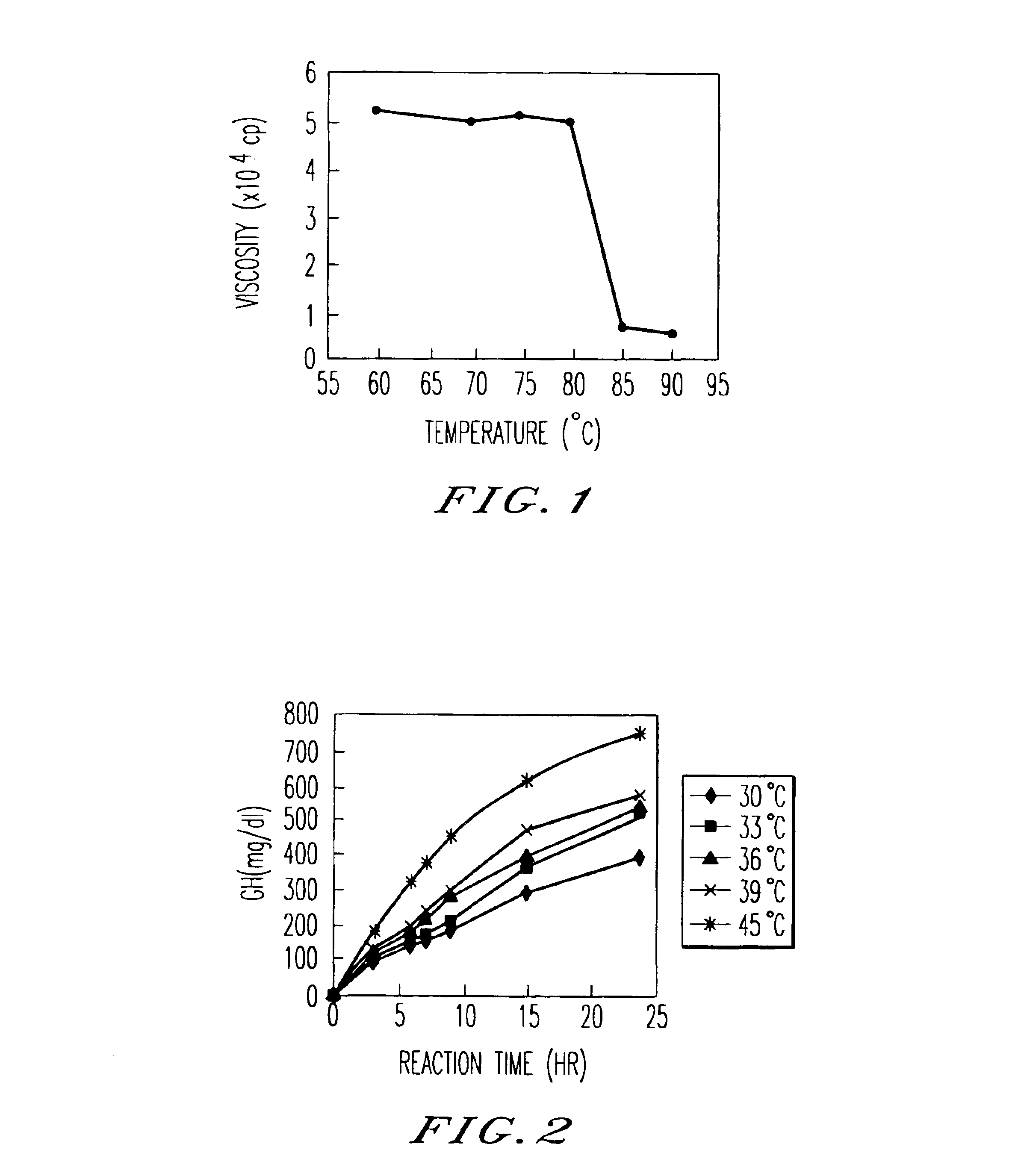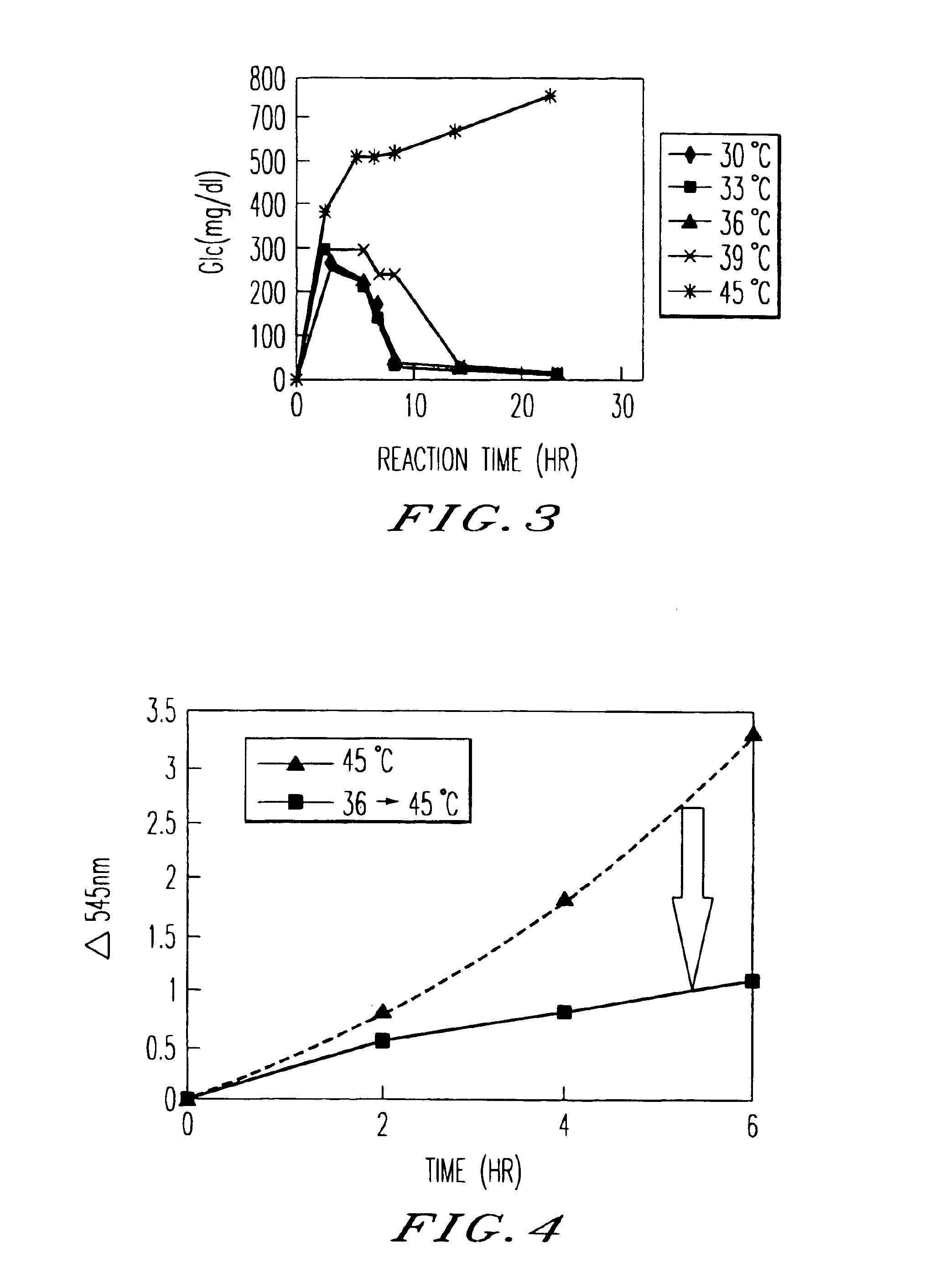Process for producing protein hydrolyzate
a technology of hydrolyzate and hydrolyzed protein, which is applied in the field of hydrolyzed protein production, can solve the problems of reducing the commercial value of hydrolyzed protein, reducing the quality of hydrolyzed protein, and reducing the yield of amino acids, so as to maintain the commercial value stably
- Summary
- Abstract
- Description
- Claims
- Application Information
AI Technical Summary
Benefits of technology
Problems solved by technology
Method used
Image
Examples
example 1
Production of a Wheat Gluten Hydrolyzate Resistant to Browning
(Emulsification Pretreatment of Wheat Gluten)
Four-hundred liters of city water were introduced into a 1,000-liter tank connected with an emulsifier for emulsification by impact shearing, Homomicline Mill (supplied by Tokushu Kikako K.K.). Water in the tank was heated. When the temperature of water reached 95° C., the operation of the emulsifier started. Twenty kilograms of a powder of active wheat gluten were charged into the tank. The wheat gluten became a completely emulsified dispersion in 30 minutes after the operation started, and at the same time, the viscoelasticity peculiar to wheat gluten disappeared. In the dispersion, neither incorporation of a coagulum (so-called clump) of wheat gluten nor inclusion of bubbles was observed at all in a slightly enlarged visual field of a microscope.
The particle diameter of the wheat gluten particles in the emulsified dispersion was on the average 150 μm, at least 10 μm and at m...
example 2
Production of Hydrolyzed Protein Resistant to Browning from the Other Vegetable Protein Materials
Hydrolyzed protein resistant to browning were produced from corn gluten and de-fatted soybeans in the same manner as in Example 1.
(Pretreatment of Vegetable Protein Materials)
Powdery corn gluten from Minnesota, U.S.A. was emulsified as in Example 1. Further, unmodified de-fatted soybeans (supplied by Toyo Seiyu K.K.) were pulverized, and then emulsified as in Example 1. Neither formation of a coagulum (so-called a clump) nor inclusion and presence of bubbles was observed at all in any of the emulsified products.
(Production of Liquid Koji)
Liquid koji was produced from the de-fatted soybean powder in the same manner as in Example 1.
(Hydrolysis of the Vegetable Protein Materials)
Each of the corn gluten emulsified dispersion and the de-fatted soybean emulsified dispersion was transferred to a 30-kiloliter fermenter, and sterilized. When the temperature of the dispersion was lowered to 50° C....
PUM
| Property | Measurement | Unit |
|---|---|---|
| temperature | aaaaa | aaaaa |
| temperature | aaaaa | aaaaa |
| size | aaaaa | aaaaa |
Abstract
Description
Claims
Application Information
 Login to View More
Login to View More - R&D
- Intellectual Property
- Life Sciences
- Materials
- Tech Scout
- Unparalleled Data Quality
- Higher Quality Content
- 60% Fewer Hallucinations
Browse by: Latest US Patents, China's latest patents, Technical Efficacy Thesaurus, Application Domain, Technology Topic, Popular Technical Reports.
© 2025 PatSnap. All rights reserved.Legal|Privacy policy|Modern Slavery Act Transparency Statement|Sitemap|About US| Contact US: help@patsnap.com


